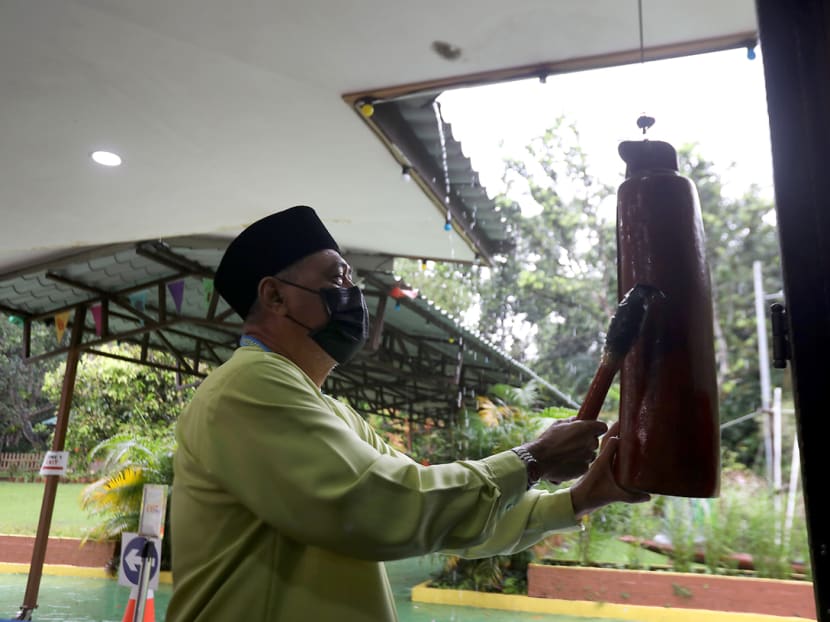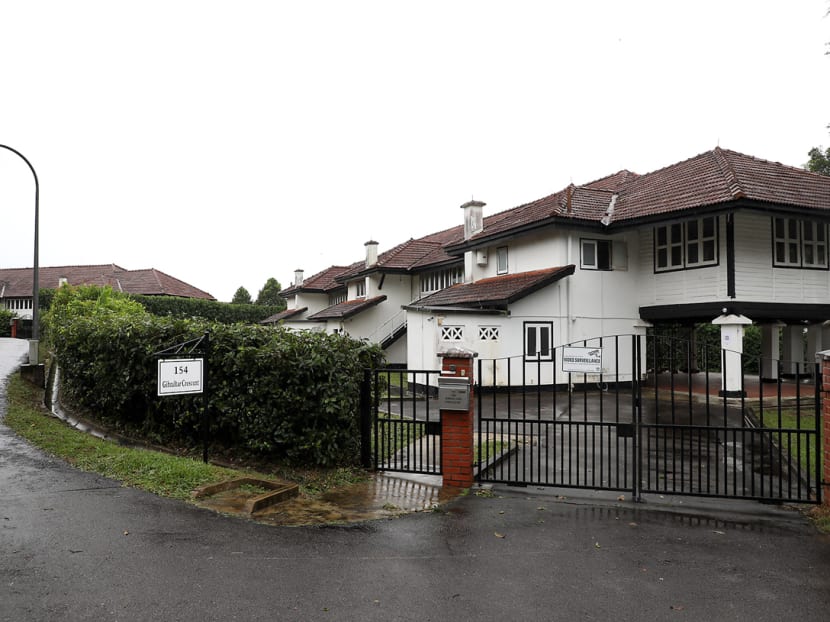Sembawang Heritage Trail showcases area’s rich history as rubber plantation, naval base, diverse community
SINGAPORE — Anyone itching to explore new places but unable to travel due to Covid-19 is being invited to check out a heritage trail just launched at coastal Sembawang, showcasing its history as a major naval base with diverse communities, and other lesser-known remnants of history.

Beaulieu House, built in the 1910s, was used as a residence for senior naval officers when Sembawang was a major naval base of the British empire.
- A self-guided heritage trail features 31 sites spread across the Sembawang estate
- It consists of three thematic routes showcasing the lesser-known stories of Sembawang’s naval history and its diverse communities
- Companion guides are available at three physical locations and online
SINGAPORE — Anyone itching to explore new places but unable to travel due to Covid-19 is being invited to check out a heritage trail just launched at coastal Sembawang, showcasing its history as a major naval base with diverse communities, and other lesser-known remnants of history.
At a media preview on Thursday (July 13), the National Heritage Board (NHB) unveiled the Sembawang Heritage Trail, a self-guided trail that features 31 sites spread across the entire estate.
It is NHB’s 21st heritage trail and comes after the 20th one was launched at Hougang last year.
Mr Alvin Tan, deputy chief executive of policy and community at NHB, said that while a Yishun-Sembawang Heritage Trail already exists, the board has amassed enough research material for a standalone trail.
The Yishun-Sembawang Heritage Trail will be refreshed as the Yishun Heritage Trail at a later date.
“The Sembawang Heritage Trail traces the development and history of the estate from a rubber plantation to an important facility for the British, and it also includes the history of community institutions and the communities that used to live here,” he said.
He added that he hopes the trail will serve as a “springboard for Singaporeans to enjoy this coastal town’s rich naval history”.

The Sembawang Heritage Trail consists of three thematic routes: Historical Landmarks of Sembawang, Communities of Sembawang and From Dockyard to Shipyard.
The routes will each take between two and three hours on foot and with public transport, and range between 5km and 8km.
RICH NAVAL HISTORY
Sembawang was a major rubber growing area in the early 20th century, before being developed into an important naval facility for Britain’s Far East Fleet in the decades before and after World War II.
Among the many remaining landmarks of the former naval base, one prominent example is Beaulieu House at Sembawang Park. The house was built in the 1910s by a businessman and served initially as a holiday retreat.
It was later taken over by the British navy and served as a home to several military officials, before becoming the residence of the chief-of-staff of the Far East Fleet in the 1960s. Today, it houses a restaurant.
Other key buildings of the period to look out for are the black-and-white houses along Gibraltar Crescent, which used to house British staff members of the naval base. Influenced by Anglo-Indian and Malay architecture, they have long verandahs and are raised from the ground to provide more ventilation.
Today, these houses are managed by the Singapore Land Authority and some are tenanted as private residences.

DIVERSE COMMUNITIES
The trail incorporated contributions from 29 past and present Sembawang residents, along with those from online community groups.
Among the contributors was Ms Sofea Abdul Rahman, 56, a former resident of Jalan Sembawang Kechil. She said she is very happy that a dedicated Sembawang trail has been launched.
“This means a lot to me because it brings back a lot of memories.” Ms Sofea contributed photos and recollections of her growing up years in Sembawang to NHB.
The trail also tells the stories of the many communities who settled in the area through the decades, including its earliest known inhabitants, the Orang Seletar (a group of indigenous natives), planters and boatmen, villagers, British naval officers and dockyard workers from all over Asia.
TIMELY TO LAUNCH TRAIL
Mr Tan of NHB remarked that it is timely to launch the Sembawang Heritage Trail now because there is pent-up demand for exploration within Singapore.
“We hope that during this period of travel restrictions, more Singaporeans will venture out and rediscover different parts of the island through all of NHB’s heritage trails,” he added.
The Sembawang Heritage Trail companion guide and map may be downloaded from NHB’s heritage portal, Roots.gov.sg. Printed copies will also be available for a limited period at Sembawang Community Club, Sembawang Town Council and Canberra Community Club.










